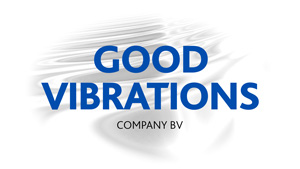Neurology
Innovative applications of gvc-technologies in neurology
GVC neuro & emo analysis services
Introduction
Good Vibrations Company B.V. is dedicated to the registration and analysis of biological signals and subsequently providing feedback with the aim to improve the performance of the individual and with the intention to enhance the quality of life. The first focal point is voice analysis. These efforts have resulted in the development of specific algorithms and software, which detect emotions in the voice: the GVC Emo Analysis Service. This can be applied in many different areas, including Gaming, Contact centers, e-Sports and in Dating/Matching.
The voice analysis can also be applied in Neurology. Patients suffering from various neurological disorders usually display in an early phase changes in their voice and may frequently suffer from swallowing disorders. Such early signs of neurological disorders may be used as diagnostic tool.
Neurological disorders
In many neurological disorders there is a disturbance in the manner in which muscles are directed by the nervous system. This is a major problem in so-called degenerative neurological disorders, including Parkinson’s Disease, Amyotrophic Lateral Sclerosis (ALS), dementia/Alzheimer’s Disease and Multiple Sclerosis (MS).
These disorders occur relatively frequently:
- Parkinson’s Disease 10.000.000 persons – globally
- Dementia/Alzheimer 50.000.000 persons – globally
- Multiple Sclerosis 2.500.000 persons – globally
- A.L.S. 50.000 new patients annually
In each of the previously mentioned neurological disorders, we see that degeneration of the nervous system result in limitation in the direction and proper control over specific muscles. This may in an early phase result in problems with swallowing. The vocal cords are also controlled by small muscles, which are directed by the nervous system.
Subtle changes in the control of the vocal cords
Subtle changes in the control of the vocal cords due to emotions result in changes in the voice. These changes are clearly audible for close relatives and are also detectable by using the GVC-Emo Analysis Service. In a very similar fashion can changes in the control of the vocal cords due to a neurological disorder lead to measurable changes in the voice.
Applications in neurology
Measurable changes in the voice may be applied in various ways:
- Diagnostics – to diagnose a neurological disorder usually costly and/or invasive techniques need to be used. This pertains to expensive MRI-systems and unpleasant electromyographical testing (needle in muscles). The GVC -Voice analysis can be performed in a cost-efficient and patient-friendly manner and contribute to an early diagnosis.
- Monitoring – to efficiently monitor the condition of the patient, an analysis of the status of the nervous system by voice analysis can be performed frequently with no burden and very limited cost. This can contribute to accurately monitoring any improvement (due to medication) or deterioration. In addition, this can be performed at home and does not require transportation to the hospital. Results of voice analysis may be transferred by the smart phone to the neurologist in order to signal a worsening of the patient and potentially intervene as early as possible.
- Dosing of medication – in patients suffering from Parkinson’s Disease it is of crucial importance that the right dose of medication is selected for optimal functioning. Ideally each day the right dose is determined. The quick and subtle daily analysis of the voice will be a perfect tool to select the right daily dose and largely increase the performance and quality of life of the patient.
Detecting neurological problems
The muscles in our body are controlled by our nervous system. Changes in our nervous system are therefore often reflected in the performance of our muscles. Clear examples of this are the physical difficulties experienced in neurological disorders such as Parkinson’s Disease, Amyotrophic Lateral Sclerosis (ALS) and Alzheimer’s Disease. An early detection of minute changes in physical performance may be the basis of an early diagnosis and ideally the starting point of a successful intervention. One of the groups of muscles that are affected in an early phase of e.g. ALS are the vocal folds. An impairment of vocal fold function results in speech disorders. GVC’s speech analysis algorithms provide a sensitive analysis of voice characteristics, which aims at detecting these speech problems even when they are still small.
Applications in detection and monitoring
Recently GVC has established research cooperation with leading academic institutes in the field of neurology in the Netherlands to further investigate the potential role of automated speech analysis based on GVC technology in early detection of specific neurological disorders. For example, an upcoming study is directed at the diagnosis of ALS. ALS is a serious neurological disease that has recently drawn worldwide attention via the ALS Ice Bucket Challenge.
Beside its role in early detection, voice-based analysis of a neurological disorder such as ALS provides a tool for monitoring the progress of the disease and assessing the effectiveness of treatment. Current methods include painful electromyograms (EMG), which involve sticking needles into muscles. Ouch! It is wonderful to imagine that a GVC application could render such painful testing less necessary.
